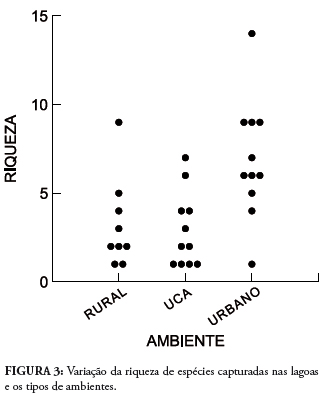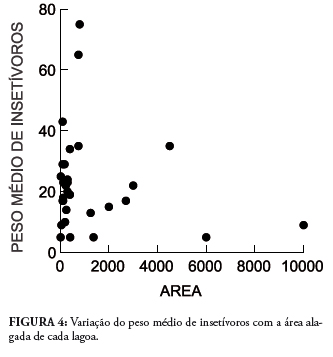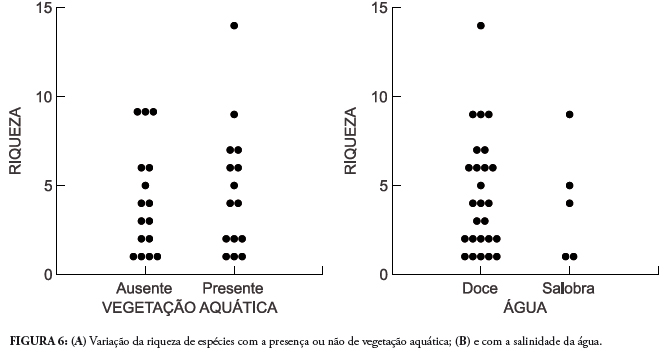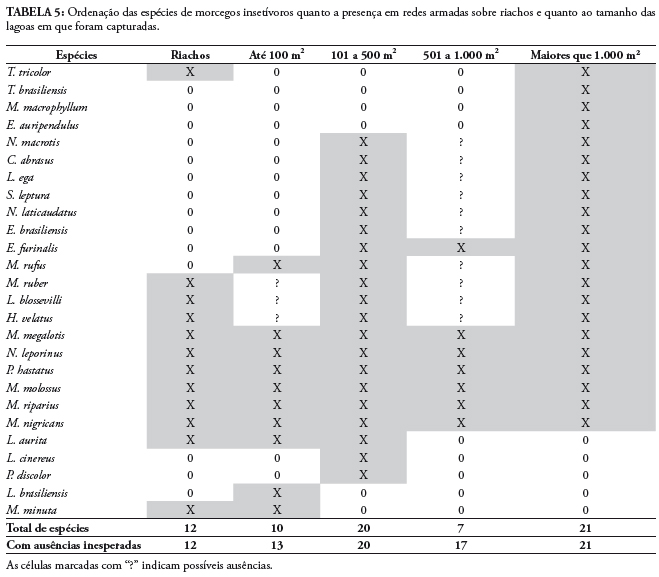Bat samplings in Neotropical region usually contain few insectivorous species. Despite the high richness of insectivorous bats, the use of mist nets results in low efficiency of this guild. The most commonly sampled in southeastern Brazil are Molossus molossus, Molossus rufus and Myotis nigricans but even represented by small number of captures and in general netted in proximity of its roosts. Although being known the preference of species of insectivorous bats by riparian habitats, few studies have explored until now the water. The aim of this study is to analyze the richness of insectivorous bats over 31 ponds in the State of Rio de Janeiro using mist nets. After 1,995 hours of sampling effort, we obtained 2,159 captures of 26 strictly and partially insectivorous species. Eight species were captured only over the ponds. The most frequent species was Myotis nigricans. Ponds with forested margins showed higher richness. Species richness in the ponds did not differ by presence or absence of aquatic vegetation and brackish ponds among that without communication with the sea. The sampling in ponds of medium size or large and close to residential areas maybe the most productive for the capture of insectivorous. Three sampled species are rarely cited in faunal inventories: Macrophyllum macrophyllum, Lophostoma brasiliensis and Thyroptera tricolor. Samplings with mist nets opened over calm waters were more representative of the insectivorous guild and result in a better sampling of the assembly of bats.
Riparian habitats; Sampling; Assembly; Richness











